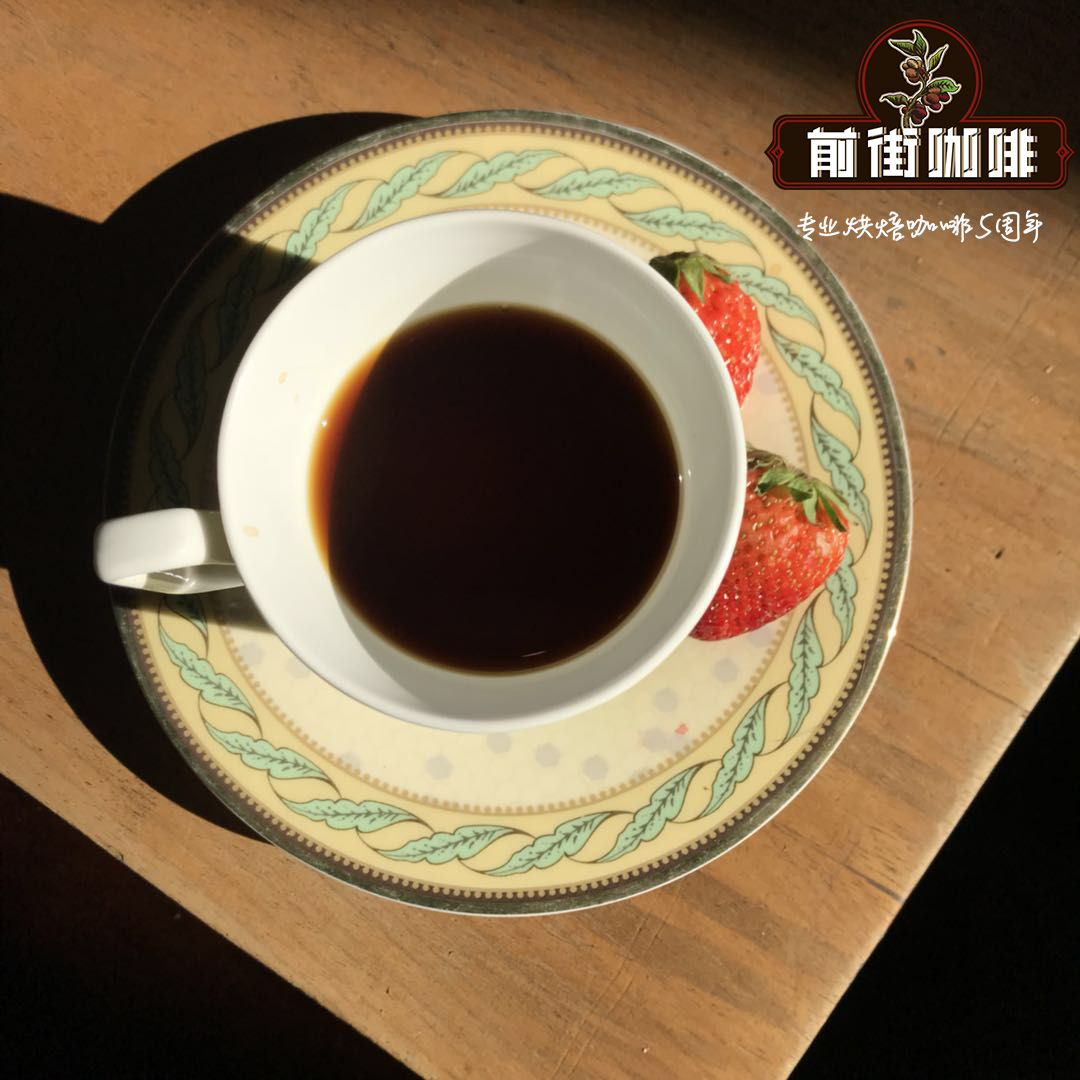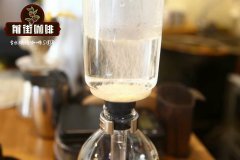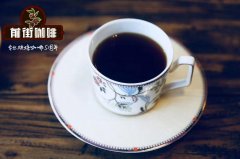What is matari coffee? Front Street Yemen Mocha Matari Coffee Introduction

Professional coffee knowledge exchange more coffee bean information please follow the coffee workshop (Wechat official account cafe_style)
Yemen is a classic of the ancient morning taste of the sun, and it is also the only producer of full-time coffee in the world. the traditional treatment of dripping water is illegal, and it has not changed since Europe became infatuated with game mocha in the 17th century. This is related to the extremely dry climate in Shumen, where coffee is mainly grown in the central highlands, with an average annual rainfall of only 400 Mel 750 mm, far less than the best rainfall of 1500 Mel 2000 mm in Arabica. Fortunately, the Yemeni coffee gene comes from the drought-tolerant Hara variety in Ethiopia, but the lack of water has made it impossible for farmers to introduce more advanced washing methods, and the wild flavor is better than Hara coffee, so Yemen has become the best choice to experience the ancient early taste. Yemen is the first stop for Arabica to transplant from Ethiopia. Although its genetic polymorphism has been impaired, it still retains a considerable diversity of coffee genes, making it the second country in the world to qualify as an ancient superior variety.
Since the 17th century, coffee beans grown in dry Arabian soil and lack of moisture in the air have been particularly hard and small. Mocha production has been limited by local political upheaval and uneconomical planting. Among them, the Yemeni mocha is represented by the Mattari produced in Bani Matar, which has a sweet, smooth and unique flavor. Slightly sour and strong aftereffect, I think it is the most suitable coffee to drink after a meal, and it is also the best in mocha.
Yemen's crude and primitive coffee-growing methods have improved slightly over the centuries. Coffee trees are planted in small parks on steep slopes, which are inaccessible areas. The coffee beans grown here are very hard and small because of the dry Arab soil and lack of moisture in the air. The elaborate irrigation system diverts the spring to a trapezoidal coffee garden surrounded by soil and low walls. All this work is done by manpower. Coffee beans are mostly sunburned on the roof or flat ground. Oddly enough, coffee drinks are not very popular in the area where coffee was first drunk, and the way coffee is made is terrible. Coffee juice is usually boiled in bean clips. Small farm farmers are more attentive to cultivating a medicinal plant called qat, because it is popular to chew quarts and neglect coffee trees. Mocha production is still limited by local political upheaval and uneconomical cultivation. Mocha coffee was named after the Yemeni mocha (Moka), the earliest coffee export port, supplying global coffee commercial transactions until the end of the 17th century.
Since people started drinking coffee, mocha has been recognized as a good coffee, with distinctive acidity, and some people think that mocha's special acidity is menacing. That's because after a hard day's work, people's sense of taste becomes dull to delicacy. The coffee itself is very fragrant. The Yemeni Moka is represented by the Mattari produced in Bani Matar. It has a sweet, smooth and unique flavor. The quality of being slightly sour and having strong stamina. Mocha is suitable for mixing with Milds coffee, especially for mixed coffee with Mysso coffee, Indonesian Java coffee and Sumatra coffee. Locals like to make Turkish coffee with a mixture of mocha and Meso. It is the most suitable coffee to drink after a meal. It is also the best of mochas.
The Yemeni mocha of Qianjie Coffee is from Matali. Here are some suggested brewing parameters.
1. Filter cup: V60
two。 Water temperature: 88 degrees
3. Degree of grinding: small Fuji degree of grinding 4
4. Baking degree: medium baking
5. Steaming time: 25 seconds
Flavor: balanced, chocolate, long-lasting caramel sweetness
Qianjie Coffee suggestion: 15g powder, 4 grinding of small Fuji ghost tooth cutter, V60 filter cup, 88-89 degrees water temperature, 30g water injection for the first time, 25 s steaming, water injection to 104g water cut off, wait for the amount of water in the powder bed to go down to half and then water injection, slow water injection until 220g water, 5 grams at the end, no water powder ratio at 1:15, extraction time about 2:00 (calculated after stewing)
Important Notice :
前街咖啡 FrontStreet Coffee has moved to new addredd:
FrontStreet Coffee Address: 315,Donghua East Road,GuangZhou
Tel:020 38364473
- Prev

How do you usually drink Colombian hand-ground coffee in Colombian Tangbo Manor
Professional coffee knowledge exchange more coffee bean information please follow the coffee workshop (Wechat official account cafe_style) Colombian coffee probe: washed, with a mellow cream texture and citrus sour taste, the entrance is clean, with brown sugar sweet. Aromas of apple, citrus, caramel, Earl Grey Tea and a hint of plums, with fresh lemon acidity at the end and a long Col finish
- Next

Colombia LaJoyeria Laheri Manor Coffee beans how to make good hand-brewed coffee?
Professional coffee knowledge exchange more coffee bean information Please pay attention to the coffee workshop (Wechat official account cafe_style) is located in (CAUCA) is located in the high altitude of 1950-2100 meters in the alpine volcanic area, west of the Pacific Ocean, with a unique micro-climate. Coffee trees are mostly planted on volcanic slopes and absorb the essence of volcanic ash soil, so this area is not only a high-quality growing environment for coffee beans.
Related
- Detailed explanation of Jadeite planting Land in Panamanian Jadeite Manor introduction to the grading system of Jadeite competitive bidding, Red bid, Green bid and Rose Summer
- Story of Coffee planting in Brenka region of Costa Rica Stonehenge Manor anaerobic heavy honey treatment of flavor mouth
- What's on the barrel of Blue Mountain Coffee beans?
- Can American coffee also pull flowers? How to use hot American style to pull out a good-looking pattern?
- Can you make a cold extract with coffee beans? What is the right proportion for cold-extracted coffee formula?
- Indonesian PWN Gold Mandrine Coffee Origin Features Flavor How to Chong? Mandolin coffee is American.
- A brief introduction to the flavor characteristics of Brazilian yellow bourbon coffee beans
- What is the effect of different water quality on the flavor of cold-extracted coffee? What kind of water is best for brewing coffee?
- Why do you think of Rose Summer whenever you mention Panamanian coffee?
- Introduction to the characteristics of authentic blue mountain coffee bean producing areas? What is the CIB Coffee Authority in Jamaica?

